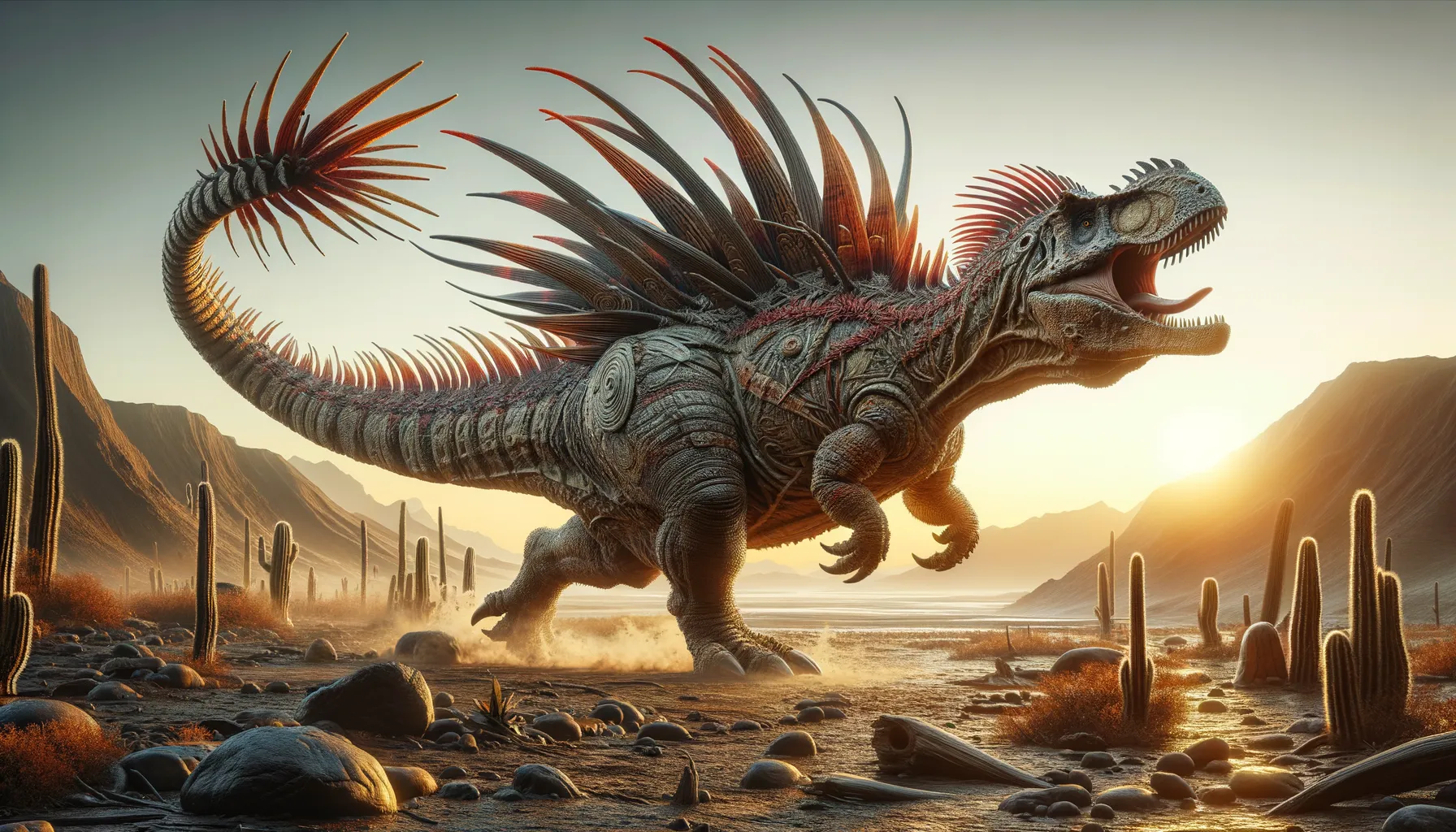
Nodocephalosaurus
Armored titan of the Cretaceous realm.
Period
Cretaceous
Length
About 4 to 6 meters long.
Height
Roughly 1.5 meters tall at the hips.
Weight
Approximately 1 to 2 tonnes.
Nodocephalosaurus was a heavily armored dinosaur known for its thick, bony plates and club-like tail. It lived during the late Cretaceous period, primarily in what is now North America. This herbivorous dinosaur was part of the Ankylosaurid family, characterized by their distinctive body armor and defensive adaptations. Its fossils provide significant insights into the variety and evolution of armored dinosaurs during this era.
Diet
Nodocephalosaurus was herbivorous, feeding mainly on low-lying plants. Its strong beak helped it to crop tough vegetation, while its gut was likely adapted to ferment and digest fibrous plant material. This diet helped it survive in diverse environments with varying availability of food sources.
Hunting
As a herbivore, Nodocephalosaurus did not hunt. Instead, it foraged for plants and vegetation, using its keen sense of smell to locate food. It likely moved in search of abundant greenery, often in forested or near-water regions.
Environmental challenges
Nodocephalosaurus faced challenges like fluctuating climate conditions and habitat changes. The late Cretaceous was a time of varying temperatures and seasonal changes that could affect food supplies. It also needed to fend off predators with its defensive adaptations, including its armored body and tail club.
Speed
Slow and steady due to heavily armored body.
Lifespan
Estimated to be between 30 to 50 years.
First discovery
Discovered in the San Juan Basin, New Mexico, in 1996.
Fun Facts
- Nodocephalosaurus is a dinosaur that lived during the Late Cretaceous period, around 75 million years ago.
- Its name means 'nodule-headed lizard', referring to the bumpy, armored texture of its skull.
- Nodocephalosaurus was a plant-eating dinosaur, known as an herbivore, which likely fed on low-lying vegetation.
- This dinosaur belonged to the Ankylosauridae family, famous for their heavily armored bodies and club-like tails.
- Fossils of Nodocephalosaurus have been found in what is now New Mexico, USA, offering clues to its prehistoric environment.
- Nodocephalosaurus had a distinctive skull with thick bony lumps, which might have helped protect it from predators.
- Despite the fascination with its armor, Nodocephalosaurus was a relatively small dinosaur, estimated to be about 15 feet long.
Growth and Development
Growing from hatchlings to full-sized adults took several years, supported by a reliable food source. Nodocephalosaurus likely went through rapid growth phases during its juvenile stage, which slowed down as it matured. This growth pattern reflects a strategy to quickly reach a size that minimized predation risks.
Habitat
The Nodocephalosaurus inhabited regions with abundant vegetation such as forested and riparian landscapes. These areas provided ample food supply and some protection among dense flora. The climate during its era was relatively warm, encouraging diverse plant life which supported its dietary needs.
Interaction with other species
Nodocephalosaurus shared its habitat with various other herbivorous and carnivorous dinosaurs. It used its armored defenses to keep predators at bay, often displaying a passive coexistence with non-threatening species. Its robust tail could deliver powerful blows if threatened, discouraging attacks from predators.
Natural lifespan
The natural lifespan of Nodocephalosaurus was likely between 30 and 50 years.
Reproduction
Reproduction likely involved laying eggs in secure, well-concealed nests. Protective instincts were crucial, as nests had to be defended from predators and environmental risks. Young Nodocephalosaurus would have been vulnerable until their armor developed with age.
Social behaviour
Nodocephalosaurus may have lived alone or in small groups, using each other for support and defense. Social interactions would include defending territory and establishing dominance without requiring aggressive altercations. Young individuals might have stayed close to mature adults for protection and learning survival skills.
Fossil locations
Fossils of Nodocephalosaurus have been predominantly discovered in the San Juan Basin, New Mexico. These findings offer critical insights into the diversity of ankylosaurids in the area. Excavations continue to reveal significant data about their distribution and paleoecological interactions.
